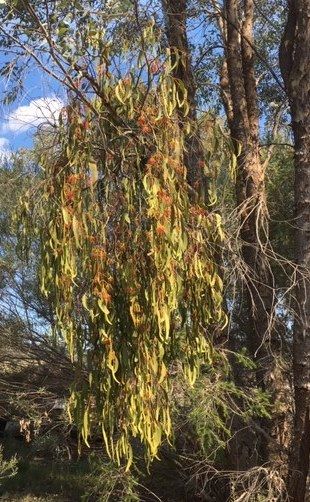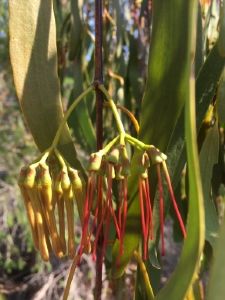Autumn in the North East brings out the exquisite flowers of Drooping mistletoe Amyema pendula. Walking in the bush parks, your attention will be drawn by the sound of bees making the most of their rich nectar, or perhaps you will spot the bright red flash of the tiny mistletoe bird as it flits between trees.
The mistletoe bird Dicaeum hirundinaceum has formed a symbiotic relationship with mistletoe plants over the millennia. A member of the flowerpecker family, this tiny scarlet breasted bird feeds on the fruits of the plant and spreads the sticky seeds to other host plants.
Mistletoes aren’t just beautiful, they provide vital ecological services that land managers have only recently begun to appreciate. They’re an important source of food and habitat for birds, arboreal mammals and insects, often providing nutritious leaves, fruits and nectar when other sources like trees and shrubs are not flowering.
There are more than 90 different species of mistletoe in Australia. They are ‘hemi-parasitic’ plants that live by making their own food through photosynthesis while also siphoning water and mineral nutrients from a host plant. Often the last thing seen alive when a large old paddock tree dies, mistletoe has in the past unfairly taken the rap as a killer parasite, when it has more likely been our poor management that weakened the tree to the point that is could no longer sustain itself.
Mistletoes are an important species culturally, traditionally providing food and medicine for Aboriginal peoples across the country as well as being a key indicator of the health of country.
Local expert David Watson (yes, Doctor Dave) has written a definitive guide to all of our local species, available from CSIRO publishing. Or you may find helpful identification photos, along with the host plants you will find the different mistletoes on, on the Australian National Botanic Garden site.
With these tools, next time you are out, you might like to take a closer look at these intriguing plants, and come to appreciate mistletoes for the amazing species they are! 






